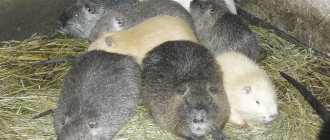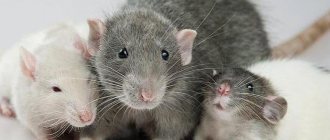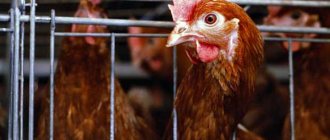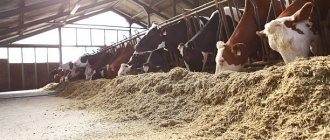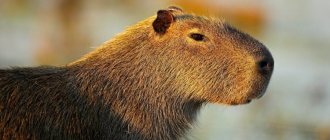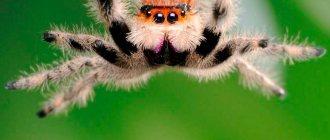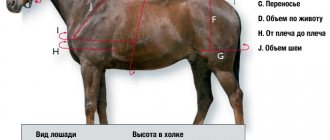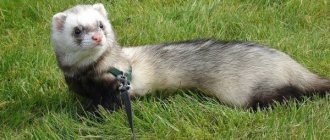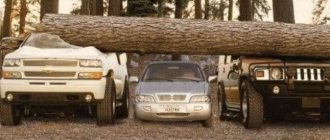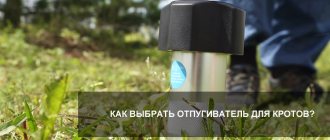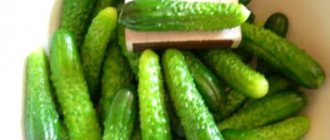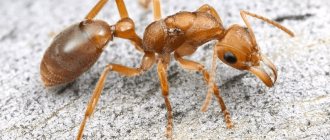Nutria have become quite popular for home breeding due to their unpretentiousness, valuable fur and tasty meat. Swamp beavers are kept in cages or enclosures, which you can buy or you can make yourself. In winter, animals need warm rooms, protected from drafts. Organizing a home for nutria is not so difficult, but knowledge of some of the nuances and features is indispensable.
Keeping nutria in cages and enclosures
Home-made nutria cages have a number of noticeable advantages over store-bought ones. They are more economical, allow you to plan the size and shape based on the total number of fur-bearing animals, allow you to select safe and clean materials, and also change the design as necessary. However, even for homemade cages there are several important requirements. In winter cages or sheds, good ventilation is necessary to avoid high humidity and a complete absence of drafts. It is better to make cages and enclosures with a wooden frame. To prevent annoying flies and mosquitoes from bothering the animals in the summer, the cages provide the possibility of installing a frame with a mosquito net. If swamp beavers are kept in an enclosure, it is necessary to provide a small pool or any container with water sufficient for bathing the animals.
Cages for nutria are most often made in a rectangular shape - this makes them easier to carry and place in tiers.
The wall and ceiling are made of durable mesh. Caging is more convenient because:
- Makes cleaning easier
- You can independently regulate the reproduction process,
- The risk of spreading infections is reduced.
The advantage of enclosures is greater freedom and proximity to natural conditions. A whole family or several same-sex animals can live in an enclosure or large cage. On ten square meters there is enough space for 15 adults. The dimensions of a cage for one or two females with cubs should be at least a meter long, 85 cm wide and at least 75 cm high. A similar cage will be enough for five to eight young nutria.
Characteristics of animals
How to make cages for nutria directly depends on the local climate. It is necessary to take into account regional differences, since nutria may suffer from improper organization of living conditions, and this is due to its physiological characteristics. Some of them are worth focusing on:
- Thermophilia . When the temperature on the thermometer drops to minus levels, nutria can get frostbite on their legs, tails, and faces. Newborn puppies die when conceived already at +8°C. If you do not increase the temperature in the room where the nutria live, they lose weight, bury themselves in the litter, spend time half asleep and may die.
- Nutria are rodents ; they chew through almost everything they see. It can be wood, plastic, soft metal. To preserve the internal structure, it must be edged with a metal corner, galvanized sheet, or mesh. If the walls are made of wood or plywood, and at the same time have a flat surface, the nutria will not be interested in them, but it is better to cover all protruding parts (slats, corners).
- The need for plant foods and clean water . The average water requirement of nutria is 500 ml per day, but provided that the animals are fed dry food. When feeding wet food, water will be required approximately 2 times less.
- Love for water . Nutria have waterproof fur and are semi-aquatic animals, so swimming pools are specially equipped for them. However, on large farms they practice cultivation in an anhydrous mode (without bathing), which does not affect the quality of the skins and the rate of weight gain. In private households, they adhere to the following schedule: in winter - anhydrous regime, in summer - bathing. In winter, even in a warm room when equipping a swimming pool, air humidity increases, which leads to an increase in the incidence of young animals.
Nutria actively drink water not only from drinking bowls, but also from the pool, so it must be regularly replaced with fresh water.
The physiological needs of animals must and can be satisfied under artificial breeding conditions.
Features of cages for nutria
The main requirement is that the cage should not only be spacious, but also comfortable for the animal and humans. Swamp beavers are quite clean, so when thinking through the design, it is necessary to provide for the possibility of easy cleaning of the cage.
A comfortable home for nutria can be made by following simple requirements:
- Feeding and nesting compartments must be separated from each other,
- The cage lid opens up
- All wooden parts of the structure must be protected with a metal mesh or sheathed with metal sheets,
- The walls of the house are insulated,
- Drinkers and feeders are securely attached to the walls.
How to choose the right cage when purchasing
When choosing a ready-made cage for nutria, you should carefully evaluate all its pros and cons.
In addition, you need to take into account:
- climate conditions under which the structure will be operated;
- number of rodents that will be kept.
The cage should not be cramped, otherwise fights will occur between the animals, which have a detrimental effect on the productivity of nutria, their health, and the quality of meat and skin. An excellent option are portable models, which not only make it possible to move houses from outdoors to indoors or vice versa, but also allow structures to be transported over long distances.
Did you know? In terms of durability and quality, nutria fur is not inferior to fox and mink fur. Nutria skin has the highest quality in the cold season.
Making a nutria cage
When making a nutria cage with your own hands, you must remember that the swamp beaver is a rodent. This means that all wooden surfaces must be reliably protected from the sharp teeth of the animal. To make a winter cage you need:
- Any available thermal insulation material,
- Metal mesh, at least five millimeters thick,
- A piece of tin sheet or piece of slate,
- Tools,
- Wooden slats,
- Plywood,
- Durable galvanized or plastic tray.
How to make a nutria cage:
- First, cut out wooden slats at least a centimeter thick and at least 75 cm long, or take ready-made ones.
- Sheets of thermal insulation material (foam plastic or roofing felt) are laid in several layers between the slats and fastened together with each other and the slats. The result is a wall with thermal insulation material inside.
- There should be three such walls in total - these are the side ones. A small hole is provided in one of the side walls.
- The walls must be covered with plywood and metal mesh on the inside.
- The front wall is a frame made of slats over which a metal mesh is stretched.
- Next, you need to knock down the frame, and it is recommended to strengthen the rear and side walls on the outside for strength with additional slats.
- It is recommended to make the floor from a grid with a cell of 15 by 45 mm, under which a tray is installed.
- This makes cleaning easier.
- It is recommended to make the cage lid on hinges - this makes it easier to open.
- The frame of the lid is covered with slate and attached with hinges or hinges to the finished cage.
In order to make a walk, another frame is made. Length 2.5 meters, width 100 cm, height equal to the height of the cage. The frame is made of wood and covered with mesh with a mesh size of at least 25 by 25 mm. The walking floor is also made of mesh, under which a retractable tray is installed.
Owner
>> Livestock >> Fur farming >> Breeding and keeping nutria
Nutria are quickly tamed, but they are very shy. When caught, their pulse rate increases to 70-80 beats per minute. Normal body temperature is 37-38 degrees.
C, respiratory rate per minute - 45-55. Hypothermia of the body in water is prevented by a reflex - a narrowing of blood vessels occurs.
Despite physical activity during bathing, the animals’ metabolism does not increase, since this rodent is characterized by a slow heartbeat.
Favorable ambient temperature for nutria is 15-20 degrees. C. In shaded cages and the presence of water for bathing the nutria and in heat up to 40 degrees. feel fine. But under unfavorable conditions and temperatures above 40 degrees.
Their thermoregulation may be impaired, and their body temperature may increase by 3-5 degrees. , fatal heat stroke can occur.
These animals tolerate frost satisfactorily when kept in insulated houses in cages and without water.
In nutria, adaptation to cold occurs mainly not due to the intensity of metabolic processes, but by reducing heat transfer. In this regard, breeding of nutria outdoors in the northern regions of the country is limited. Nutria adapt to high temperatures due to the ability to sharply reduce metabolism.
What conditions do nutria need?
Nutria are not too demanding on living conditions, but they have their own specific needs. The most important factor for them is the abundance of food.
Although the main food during the growing season is green food, and hay for the winter, you should know that the nutria’s need for concentrated food is very high.
Nutria growers must have a sufficient amount of grain, mainly barley, wheat, corn, or several other feed additives, crackers or compound feed. If there are no such additives, it will be very difficult to grow nutria. In winter, it is necessary to have a sufficient amount of succulent feed, for example, potatoes, beets, carrots, etc.
Along with the feed, the fur farmer must have an appropriate plot of land (fenced garden, courtyard, etc., which should be far from the road, busy traffic and noise. The size of the plot depends on the method of keeping nutria the fur farmer will use.
The most common practice is to keep animals in regular paddocks with wooden or brick houses and a pond, which must be of sufficient size and a constant source of water (stream, pipeline, etc.).
When keeping nutria in cages, less space is needed, since the cages can be placed in a greenhouse, garage, or under a canopy. Small containers for water are installed in the cages, or the nutria are kept without water. In this case, the cells are placed only in a bowl of water.
Breeding nutria in cages, compared to breeding on free ranges, reduces the time required to care for the animals.
Places where nutria are kept should be separated from places where farm animals, birds, etc. are kept. Too open sunny places are not suitable for housing nutria (in summer, animals suffer from overheating), as well as cold, foggy lowlands and open places where strong winds blow.
What devices are suitable for nutrias
Classic system for placing nutria in pens (dimensions, see Doll)
The main devices for keeping nutria on a farm (breeding groups, families, weaners) are a pen or a cage. In Slovakia, these animals are often housed in pens 1.2-1.5 m wide and 1.6-2 m long with a concrete floor. The floor has a slight slope and an inlet to a pool of water.
At the transition from the ground part of the pen to the pool, a so-called bench is installed. This is the shallow part of the pool, approximately 300 mm wide, gradually turning into the pool itself, the depth of which is 350-450 mm. The outlet is located at the lowest part of the pool.
In the rear part of the paddock, a house is equipped, the width of which corresponds to the width of the paddock, and the depth is 600-800 mm. Since the house serves to protect animals from adverse weather, it must be well insulated. The house can be brick with cement plaster or other suitable material.
If it is wooden, then its inner side should be lined with tin so that nutria cannot gnaw on it. The top of the house is covered with a hinged lid made of boards covered with roofing felt. At a height of approximately 0.5 m from the floor of the house, small ledges can be placed on the walls, on which mesh frames with hay are placed in winter for feeding the animals and for insulation.
The fences of the pens on the sides and front should be 800-900 mm high. They must be made of durable and smooth material, for example, ethernite plates, metal sheets, concrete, etc. Mesh fences are unsuitable, because animals can see each other through them, this bothers them, and they can climb over the mesh.
To make better use of space and reduce the cost of constructing fences, you can build blocks of walking yards with a common pool. In this case, the water space between individual paddocks should be divided by frequent metal bars, preventing animals from getting through to each other.
When building paddocks, it is necessary to ensure that the floors in them are smooth, in order to prevent abrasion of the hair on the belly of the animals - the most valuable part of the skin.
The transition from land to pools should be done in such a way that animals, especially young animals, can easily enter the water and exit back to land. On the bench, animals cool down on hot days and enjoy combing their fur.
The size of the walks should be calculated according to the estimated number of animals that should fit in the house.
What cells are suitable for keeping nutria?
Cages for nutria are made of metal materials (nutria chew wood). The walls of the cells can be made of metal sheets, mesh, iron rods, etc. The cells must be closed at the top so that the nutria do not crawl out of them.
The floor is made either entirely from a metal sheet, or lattice, made from a suitable mesh with cell sizes of no more than 25x25 mm. The cages are installed on legs approximately 0.5 m high; The height of the cells is 0.6-0.8 m.
If you want to combine the cellular maintenance of nutria with the use of a pool, then it must be metal, of the same design as for free-range keeping. When keeping animals in cages without bathing, only drinking bowls with water are installed in the cages.
In the back of the cage there is a wooden booth, upholstered on the inside with a metal sheet, slabs of ethernite or Heraclitus, etc. It is covered on top with a wooden hinged lid. The cages are placed either in the open, covered with lids, or under a canopy. In winter, it is recommended to insulate them from the sides. It’s also good to put them away for the winter in a shed, barn, etc.
Diagram of a facility for placing nutria in cages
nutria in cells
It is advisable for a beginning nutria breeder to visit one or two nearby farms, build structures for keeping nutria and prepare the required amount of feed.
Nutria can be purchased through regional societies of rabbit breeders and amateur fur breeders, as well as at the market. Healthy nutria from 2 months of age and older are subject to sale.
It is best to buy females at the age of 2-3 months, since at an older age they are uncooperative and it is difficult to form groups of them for mating.
Females 5 months older should be purchased in already established groups (5-7 heads), ready for shoal mating. When choosing nutria, you need to pay attention to their health status. Healthy guard hairs are brightly colored and shiny. If it is dull and disheveled, the animal was not fed and maintained satisfactorily.
Bright orange incisors indicate good health. Young and old nutria have lighter incisors. If they are pale, with dark spots, the body is weakened.
The most suitable season for purchasing nutria is the warm season, when animals can be carried or transported a short distance in uninsulated cages, in ordinary bags or closed baskets.
No more than 2-3 young animals are transported in one bag. Adult nutria, especially males and pregnant females, are transported one animal at a time in a cage 50–60 cm long, 30–40 cm wide and high.
This portable cage can be made from metal mesh, boards or thick plywood.
Nutria quickly gets used to humans. She can be kept as a pet. Nutria remember their nickname well and willingly go to their owner, whom they recognize by their voice and smell.
When catching nutria for transplantation and inspection, you need to drive the animal into a house or into a corner, take it by the middle of the tail (in this case, the animal is allowed to rest its front paws on the edge of the cage or house) and with the other hand take it in the area of the front paws (under the chest), grabbing a little skin, lift and hold in weight, then the head is raised above the body.
The head of an aggressive nutria is held with a spatula. When transplanting such nutria from cell to cell, they can be taken by the tail and transferred in this state.
You can also grab the back legs so that she doesn't scratch her. Puppies up to 2-3 months old are held by hand under the arm and in this position they are examined, tattooed, treated, etc. When catching runaway animals, traps of various designs are used.
When transported in mesh or wooden boxes, animals sometimes rush in all directions and hit the wall, injuring themselves. In such cases, the mesh box is covered with something dark.
Pregnant females must be handled especially carefully - when fishing, you should not grab the tail sharply and hold it in an upright position for a long time, this can cause abortion. Pregnant females can also be carried or transported in bags.
The house of a pregnant female is cleaned in her absence, when she is on the walk, and the walk is cleaned when she is in the house.
A nutria bite is dangerous! It can be instant and powerful. Nutria can bite your finger. Therefore, there is no need to frequently disturb the animal during the breeding season.
The cause of anger is malnutrition in group housing. Unnecessarily, you should not touch the nutria in the back area, it reacts negatively.
The animal remains completely calm when you touch or stroke its belly.
If you need to examine the nutria from the abdomen, take it with both hands, hold it in the area of the tail and shoulder blades, turn it onto its back with a quick, strong movement and press it against the lid of the house.
The best rule for taming nutria is to acquire them at a young age, as puppies. Puppies quickly become tamed to human hands and, having matured, behave calmly.
For breeding nutria in captivity, a pool of water for swimming is not necessary.
Source: https://www.sobstvennik.org/livestock/nutria/05.php
Cage for summer keeping nutria
A summer cage is a portable house, convenient for keeping animals outside during the warm season. To make it you will need:
- Boards,
- Slate or any other roofing material,
- Metal grid,
- Floor mesh with a cell of about 15 by 45 mm,
- Tools.
You can simplify the manufacturing process by first drawing a diagram of the future home for the nutria or by drawing up drawings with detailed descriptions of the dimensions. Cage drawings can also be found on the Internet in numerous livestock breeding forums.
The manufacture of the cage begins by assembling a wooden frame, onto which the mesh will subsequently be attached. The dimensions of the summer cage can be any; the minimum requirement for one animal is 80x40x60 cm. The inside of the boards is lined with metal mesh. A hole is cut into one of the walls. A sleeping place is placed at the far wall, and drinking bowls and feeders are installed in the feeding area. The removable cover is made of a wooden frame covered with slate. The floor can be made of metal mesh, under which a pull-out tray is installed. Then a walkway is constructed from a similar wooden frame and metal mesh. The recommended walking length is at least two meters with a width of one and a half.
During the warm season, a small pool of water is installed inside the paddock.
Conclusion
The proposed cage maintains a comfortable temperature well in both summer and winter. You need to install a container with water for bathing in it. Fine mesh on the walls prevents the plywood from being chewed. All materials are light enough, and even one person can carry the empty cage by removing the roof.
If the female living in it gives birth, then it is enough to install a drawer from a desk or cabinet in the far corner. This will be enough for her to build a nice and warm nest for the babies, and she can watch them without opening the door.
Summer enclosures for nutrias
Animals can also be kept in spacious enclosures during the summer months. They are not difficult to make from a metal mesh or fine-mesh grid. Less commonly, a summer enclosure is made from slate or boards - the design turns out to be very heavy and complex. The advantages of a slate enclosure are that animals are protected from sunlight. Disadvantages - constant dampness and poor ventilation, which threatens the emergence of certain diseases.
If you make an enclosure from only mesh, it will not be very reliable and will not allow the animals to hide from the sun or wind.
The best option is an enclosure made of mesh with a roof made of slate or boards. In any of the enclosures, it is necessary to provide a place to install a canopy or house where animals can rest and hide from bad weather. The dimensions of the enclosures depend only on the free area of the site, but should not be less than the minimum allowable. For one family of a male and two or three females, the minimum size of the enclosure is five meters long and two and a half meters wide. It is necessary to make a solid foundation around the perimeter. Most often, a buried lattice acts as a foundation.
If the enclosure is planned to be permanent, you can make a solid foundation of cement or brick. The height of the wall of the enclosure should not be less than a meter. To make a summer enclosure, a wooden frame is also used, which is covered with a metal mesh. A door is made in one of the walls of the enclosure. On the territory of the enclosure for nutria there are several houses, the role of which is most often ordinary mesh cages or wooden houses. The house can be made from wood. The height of the wall should not be less than 70 cm, and the length should not be less than 50 cm.
To prevent nutria from chewing through the wood, the house is lined with metal mesh.
In addition to the houses, several feeders and drinking bowls are installed inside the enclosure, as well as a small pool. If the enclosure is permanent, the pool can be dug, reinforced with concrete and filled with water. Another option is a dug-in old bathtub or a large metal trough. It is important to remember to regularly change the water in the pool, otherwise it will quickly deteriorate and cause a lot of trouble.
Types and features
When choosing the type of housing structure for nutria, farmers primarily focus on the weather conditions of the region. In warm climates, animal enclosures can be located outside. But in colder climates, it is advisable to build portable structures that are placed outside in the summer and moved to a warm room in the winter.
For summer maintenance
A special feature of cages for the summer habitat of animals is that they do not require insulation. For the construction of structures, you can use brick, metal, steel lattice. In hot weather, animals must have constant access to water - for this purpose, homes are equipped with an artificial pool or pond.
1 - swimming pool; 2 — descent; 3 - walking; 4 - house.
If it is not possible to install water containers inside the cage, they are placed in the walking area. An excellent alternative to a swimming pool is a shower, which farmers can organize for the animals themselves, up to 3 times a week.
Important! In the northern regions, the nights are quite cold, so experts recommend keeping nutria indoors throughout the year.
Summer enclosures
The most convenient and comfortable housing option for nutria in the summer are considered to be enclosures, which provide the animals with a large area for walking and walking. In order to separate animals, for example, young animals or pregnant females, it is necessary to equip several enclosures at the same time.
As a rule, concrete is used as a material for constructing the base of a structure, which ensures high strength and durability of the structure. The walls are made of steel mesh, sheets of plywood or slate. For convenience and insulation of the home, the floor is covered with bedding material.
On the area of the enclosure there are houses in which pets can hide in hot or rainy weather.
Permanent cells
In regions with warm climatic conditions, above-ground stationary houses made of brick or natural stone are used to organize housing. The walking area is fenced with a steel mesh firmly installed in a concrete base or ground.
Permanent cages are equipped with houses, which must have an opening roof. This design will allow you to easily clean the inside of your home, monitor rodents, and, if necessary, move them from one compartment to another.
Did you know? Nutria are very clean. They do not have a characteristic specific odor that is characteristic of other rodents.
Cell placement options
Cages in a nutria shed or outdoors can be arranged in one, two or three tiers. Multi-tiered contents save space and simplify maintenance. Due to this arrangement of cells, it is possible to significantly increase the population and make growing nutria the most profitable.
For multi-tier housing, group and single cages are provided, which, as a rule, are located at different levels, separated by removable inclined trays for collecting manure.
Nutria cages
Pool
The presence of a swimming pool in the nutria walking area is, if not mandatory, then very desirable. After all, these animals are waterfowl, and the absence of a body of water negatively affects their psychological and physical health. Nutria that are kept exclusively in cages may exhibit restless behavior, have duller fur, and have trouble gaining weight.
The pool is equipped only for the warm season. To do this, choose a large container in which you need to change the water regularly. Pools with high sides can be dug into the ground so that nutria can easily enter the water. Most often, old bathtubs are used as containers in personal plots.
Recommendations for selection
When choosing the type of cage for nutria, you need to consider:
- weather conditions in the region;
- number of animals;
- structural strength;
- its durability.
This is why experienced nutria growers prefer metal cages. Animals cannot damage the structures, they do not rot from animal waste products, the cages are clearly visible and washable. For the winter, the structures are put away in a warm shed, and in the summer they are placed under a canopy to protect them from the sun and rain.
How to make a shed for nutria?
The barn shed is one of the most popular bunk cage designs. Inside the room in such a barn there is a longitudinal corridor, on the sides of which houses for nutria are placed in 2 rows. The floor mark of the lower tier is at a height of 70–80 cm.
The dimensions of the house located below are 160x80x50 cm. It is intended for raising 7 nutria per slaughter or for mating a group (1 male for 6 females).
The second tier of the shed-barn has more compact dimensions: the houses are made 80 cm in length, 80 in width and 50 in height. Pregnant females and newborns who have not yet been weaned are usually kept here.
The shed barn has other design features that novice breeders need to take into account:
- The roof of the barn is made of glazed frames.
- Outside, there are 2 paddocks with ponds, access to which is provided by two manholes measuring 24x20 cm. In the cold season, these manholes can be closed with valves to prevent the penetration of cold.
- Each house is divided by a vertical partition into a compartment for food and a nest.
Important! The two- and three-tier design of the houses, in comparison with the use of single-tier cages, significantly simplifies the care of nutria, does not affect the cost of the entire structure and significantly increases the capacity of the room. Moreover, this method of breeding does not have a negative impact on the quality of nutria meat or skins.
Growing nutria is a low-cost and hassle-free activity. These animals are very hardy, not susceptible to disease, and survive well in both hot and cold climates. Nevertheless, successful cultivation requires the creation of favorable conditions, the main one of which is the proper arrangement of the place of detention.
What to feed nutria?
Nutria in the wild eat vegetation, so without it the diet is considered incomplete. At home or on a farm, animals are fed with various types of additional feed. Favorite food is considered to be reeds, matting, algae and other plants that grow near water bodies.
In summer
In the summer, give preference to plant foods - this is good for nutria and beneficial for the farmer. The daily intake of herbs is about 1 kg, depending on age. What this list includes:
- weeds;
- branches of bushes and trees;
- seaweed;
- reeds, cattails;
- clover, alfalfa;
- cereal, legume tops;
- sweet clover;
- grape vine;
- cane;
- salads and greens;
- sorrel;
- buckwheat;
- cinquefoil;
- plantain;
- sow thistle;
- coltsfoot;
- blooming Sally;
- dandelions;
- pemphigus.
In addition, you can give the following:
- up to 100 g of grain feed (a mixture of barley, oats, millet, rye, wheat);
- fruits - grapes, pears, apples (150-200 g each);
- vegetables - zucchini, tomatoes, cabbage, watermelons and melons, turnips (the same amount);
- ground corn;
- sunflower.
in winter
In winter, there is no fresh greenery, so nutria are fed with hay and straw, but this is not enough to saturate the body with the necessary elements. The following foods are also mandatory:
- Fruits and vegetables. They should be given 300 g per head. Apples, beets, carrots, boiled potatoes and pumpkin prepared in the same way are suitable. The best root vegetable for nutria is Jerusalem artichoke, so prepare it in the fall.
- Steamed grains (corn, barley, oats). Minimum - 150 g, maximum - 250 g. Pour boiling water over the crushed grains, let it brew for 3-4 hours, then add 1 g of salt, 0.7-1 g of chalk, 10 g of cake, 1.5- 2 g fish oil.
- Sprouted grain crops. Give a maximum of 30 g per day. Hay hay is very rich in vitamins. To do this, the hay is chopped (4-5 cm pieces) and given in a dosage of 50-60 g.
- Ready food. It is sold in pet stores or specialized outlets. Suitable for nutria, pigs and rabbits. No other one can be used.
Essential Vitamins and Minerals
Nutria in the wild receives vitamins and minerals to a greater extent from the root system of herbs that grow on the shores of reservoirs. This is impossible at home, so the farmer is obliged to additionally feed the pets.
Most of all, water rats need the following elements:
- vitamins – A, D, B, E;
- phosphorus;
- calcium.
What experienced nutria breeders use to replenish these and other substances:
- standard premixes or protein-mineral-vitamin supplements (the dosage is indicated in the instructions, depends on the type of feeding, the manufacturer);
- feed yeast (one head needs from 5 to 10 g, depending on age);
- table salt (1 g for an adult, 0.5 g for a baby);
- hydroponic greens (50-100 g per day);
- fortified fish oil (0.5-1 g);
- pharmaceutical carotene (for adults – 3 g, adolescents – 2 g, puppies – 1 g);
- multivitamins (maximum 1 g).
Mix supplements thoroughly when diluting with food - otherwise one animal will receive an excessive amount of vitamins, another - too little.
Vitamin deficiency leads to a decrease in the animal's body's defenses, miscarriages during pregnancy, arrest of fetal development, and even cannibalism.
Benefits of Breeding
Growing nutria is very profitable for several reasons. Firstly, animal meat has a high nutritional value and has a wonderful taste. The meat is quickly and easily digestible, classified as dietary, very tender and tasty.
In addition to meat, nutria's fur is also highly valued. The skins, which have a glossy shine, are widely used in furriery: they are used to make hats and warm fur coats. Nutria, among other things, are highly fertile. With proper care and adequate feeding, the livestock grows rapidly. You may also be interested in what is the gestation period for rabbits.
Barn for a small family
If you support one family, then a small structure that you build with your own hands is enough. If you have several families, you may need a more substantial structure. Also, the barn needs to be built taking into account the fact that your herd may grow in the future. A room measuring 6x5x2.5 m can comfortably accommodate several families.
Barn with paddocks
It is best to build a shed from cinder blocks. This is not only the most affordable material, but also retains heat very well. The inside of the building can be insulated with polystyrene foam and then covered with mesh or metal sheets. Otherwise, animals may simply chew it.
Shell rock or brick are also good materials; in any case, the choice of what exactly to build a home for your charges from is entirely yours.
The room must have a window and an entrance door. It would not be superfluous to arrange a hatch through which manure will be thrown out. It is better to have concrete floors. The walls and ceiling need to be insulated, the roof covered with slate or sheet iron.
Why breed nutria?
Some time ago, nutria were profitable to keep because of their valuable skins.
We kept nutria from 1974 to 2002, my father and I stored hay for the winter, and my mother sewed hats from September to February. The livestock reached 250 pieces, it was quite difficult, especially when cleaning enclosures and cages. But thanks to the sale of hats, they built a house of 180 sq.m.
But the value of nutria is not only in their skins, but also in meat, which is considered dietary. It is in no way inferior to rabbit meat and is very similar to it.
About the taste of meat: the meat of both is tasty and dietary, and not everyone can tell by taste which is nutria and which is rabbit. According to reviews from members of our portal who are seriously involved in nutria farming, a cut male carcass at the age of 7-8 months weighs approximately 3.5 kg, a female carcass is slightly lighter.
I don’t remember the maximum weight, 5-6 kg, maybe more. But I remember that the carcass of a Yurlov rooster of the same age was 4.5 kg! I plan to give the skins to people who do this.
The fertility of nutria is significantly lower than that of rabbits, but it is quite possible to provide your family with meat and still sell the surplus. In addition, nutria get sick much less often than rabbits.
